Navigating Train Accident Lawsuits: A Primer
Navigating the legal aftermath of a train accident presents a myriad of challenges, from understanding the intricate details that led to the accident to mastering the legal prerequisites for a successful lawsuit. Victims and their families often find themselves in uncharted territory, grappling with both the emotional and legal complexities of their situation. This primer aims to demystify the process, offering a clear path forward through the thicket of legal standards, evidence gathering, and the pursuit of justice. As we explore the critical steps and considerations involved, one cannot help but recognize the importance of informed guidance in such matters.
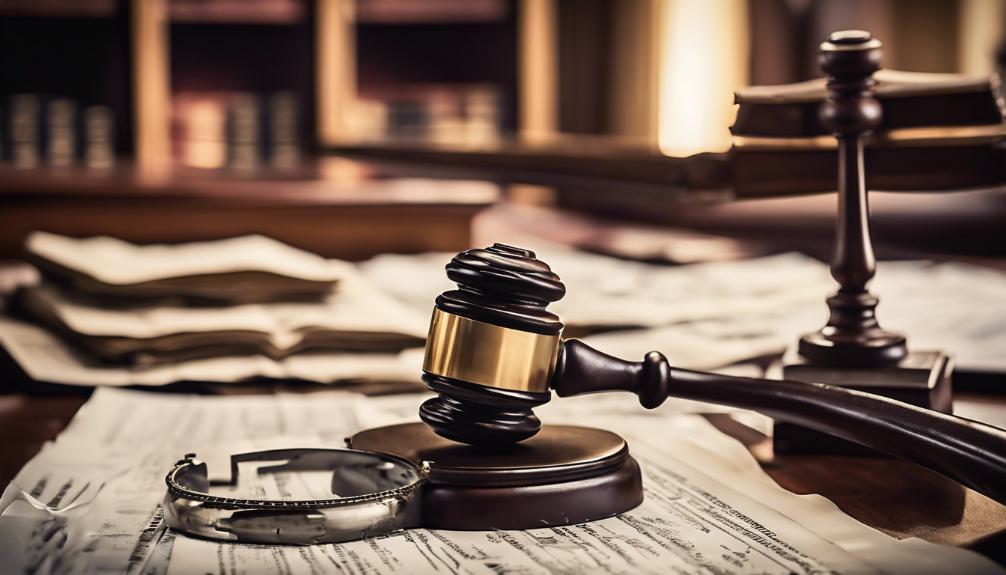
Key Takeaways
- Establishing negligence is crucial for a successful train accident lawsuit.
- Comprehensive evidence collection strengthens the case and supports negligence claims.
- Immediate post-accident actions by victims are vital for building a strong legal foundation.
- Support systems play a key role in the recovery and settlement process for victims.
Understanding Train Accidents

Grasping the intricate dynamics of train accidents necessitates an examination of their common causes, including derailments, equipment failures, signal issues, collisions, and track faults. These factors collectively contribute to the complexity of understanding such incidents, which are not merely random events but often the result of a series of interconnected failures or oversights. The study of these causes is crucial for developing preventative measures and improving safety protocols. It also serves as a foundation for legal proceedings, where establishing the root cause is essential for determining liability and accountability. Understanding the multifaceted nature of train accidents is the first step towards ensuring justice for victims and preventing future occurrences.
Common Causes Explored
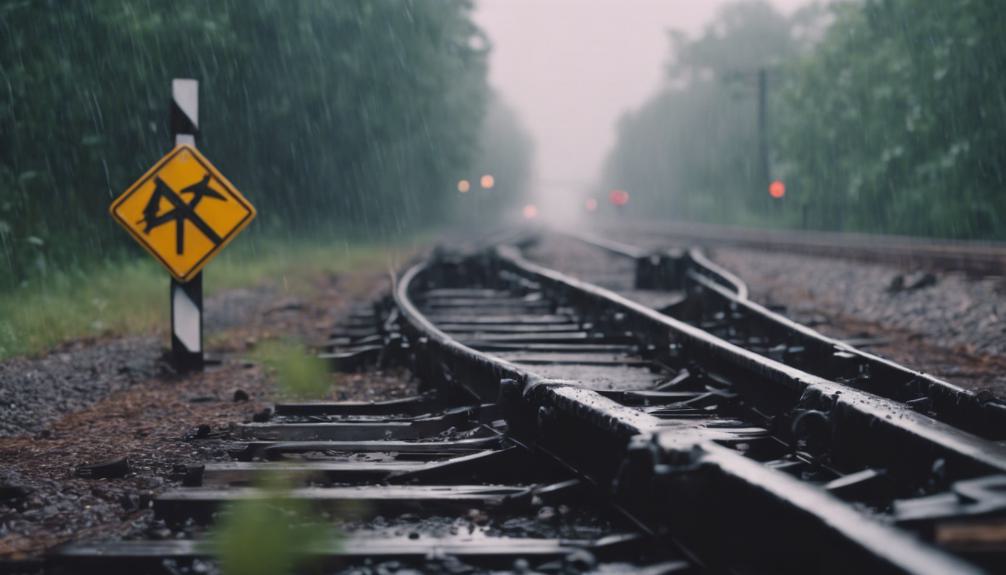
Exploring the common causes of train accidents sheds light on the critical factors contributing to these devastating incidents. Derailments top the list, often resulting from equipment issues or track failures, highlighting the importance of regular maintenance and stringent safety standards. Signal problems, another significant cause, underscore the necessity for advanced communication systems to prevent collisions. Additionally, collisions with other trains or vehicles at crossings are not uncommon, pointing to the need for improved crossing safety measures and public awareness. Understanding these causes is paramount for stakeholders to implement preventative strategies, ensuring the safety of passengers and crew alike. This awareness not only enhances safety protocols but also informs legal strategies in the aftermath of an accident.
Essentials of Legal Proof
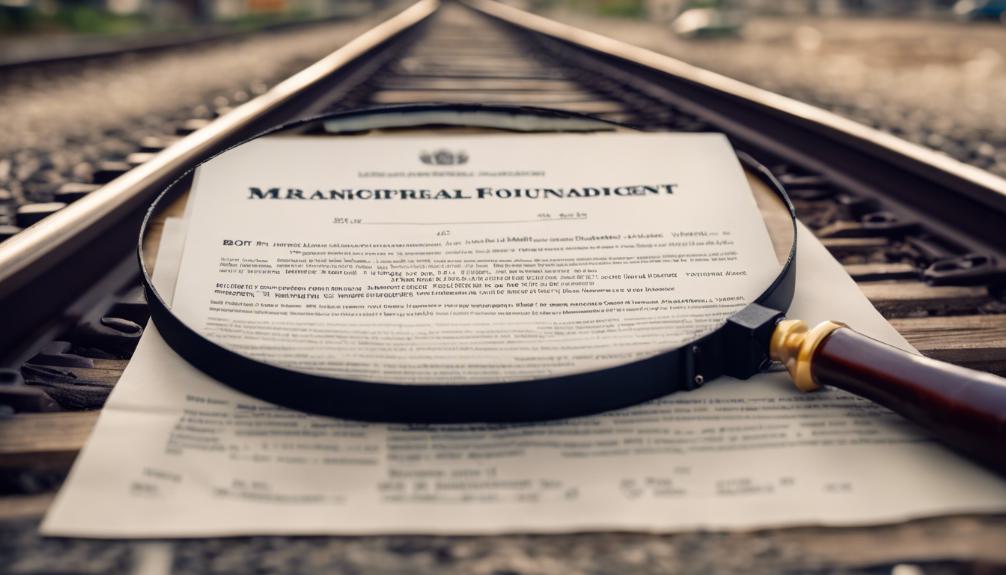
Understanding the essentials of legal proof is crucial for victims seeking justice in train accident lawsuits. The cornerstone of a successful lawsuit is establishing the four elements: duty of care, breach of duty, causation, and damages. The plaintiff must demonstrate that the defendant owed a duty of care towards them, which was breached, leading directly to an injury. This injury must have caused quantifiable harm to the victim. Negligence, a common allegation in these cases, requires showing that the defendant's actions or inactions fell below the expected standard of care, directly causing the accident. Proving these elements involves a meticulous gathering and presentation of facts, underpinned by a clear understanding of legal principles and the ability to convincingly argue the case in court.
Importance of Evidence
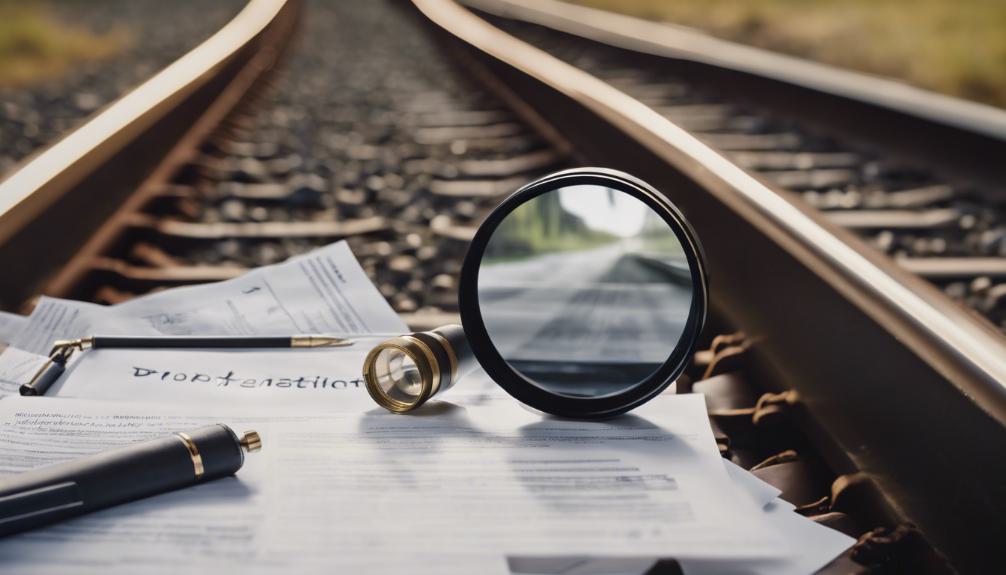
In train accident lawsuits, the collection and presentation of evidence play a pivotal role in determining the outcome of the case. Evidence serves as the foundation for establishing the negligence that led to the accident. It includes documentation of the scene, witness statements, and expert analyses of equipment and signal failures, among others. This evidence must unequivocally show the duty of care owed, the breach of that duty, the injury suffered as a direct result, and the causation linking the breach to the injury. Successfully presenting this chain of evidence is important in proving negligence, which is a central element in train accident cases. Without compelling evidence, the chances of securing a favorable verdict or settlement significantly decrease, underscoring its paramount importance in litigation.
Immediate Steps Post-Accident
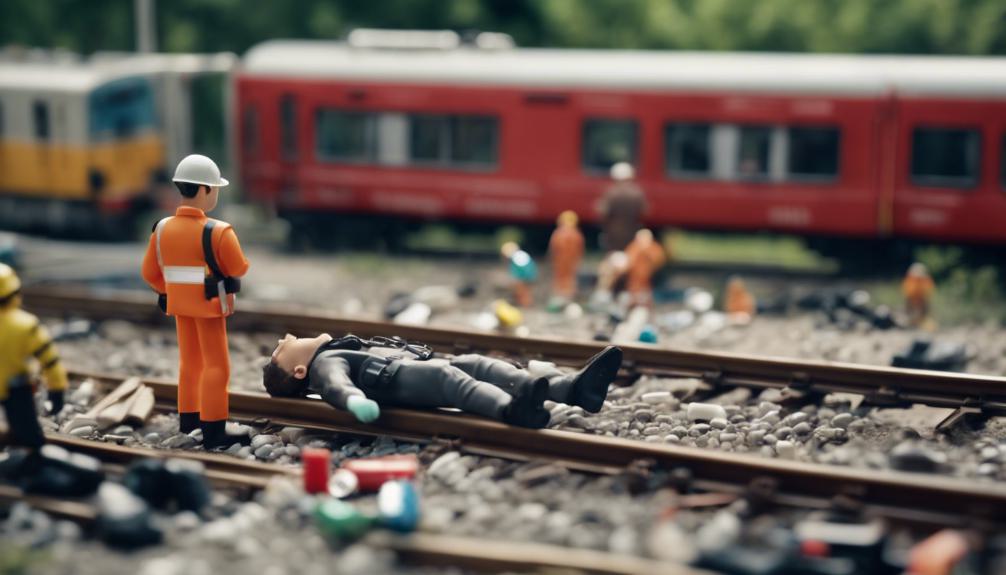
Following the emphasis on the importance of evidence in train accident lawsuits, it's imperative to outline the immediate actions victims should undertake in the aftermath of an accident. First and foremost, victims should document the accident scene extensively, capturing photographs, and gathering witness accounts, ensuring a vital foundation for their case. Promptly seeking medical attention is critical, not only for health recovery but also for substantiating injury claims through medical records. Adhering to medical advice and keeping a detailed account of all treatments is essential. Preserving evidence, such as clothing and personal belongings affected during the incident, can further solidify the case's foundation. These steps are fundamental in establishing negligence and building a compelling lawsuit.
Selecting the Right Attorney

Selecting the right attorney for a train accident case is a critical step toward guaranteeing a favorable outcome in your lawsuit. The ideal attorney should have a strong background in personal injury law, with a specialization in train accidents. This guarantees they are familiar with the nuances and complexities of these cases. Experience is paramount; look for a lawyer who has successfully handled similar cases and can navigate the intricacies of train accident litigation. Verify their track record through client testimonials and case results. A reputable attorney will be transparent about their experience and success rate. Additionally, make sure they are communicative and responsive, as a strong attorney-client relationship is fundamental to the success of your case. Choosing wisely can significantly impact the compensation and justice you receive.
Navigating Legal Challenges
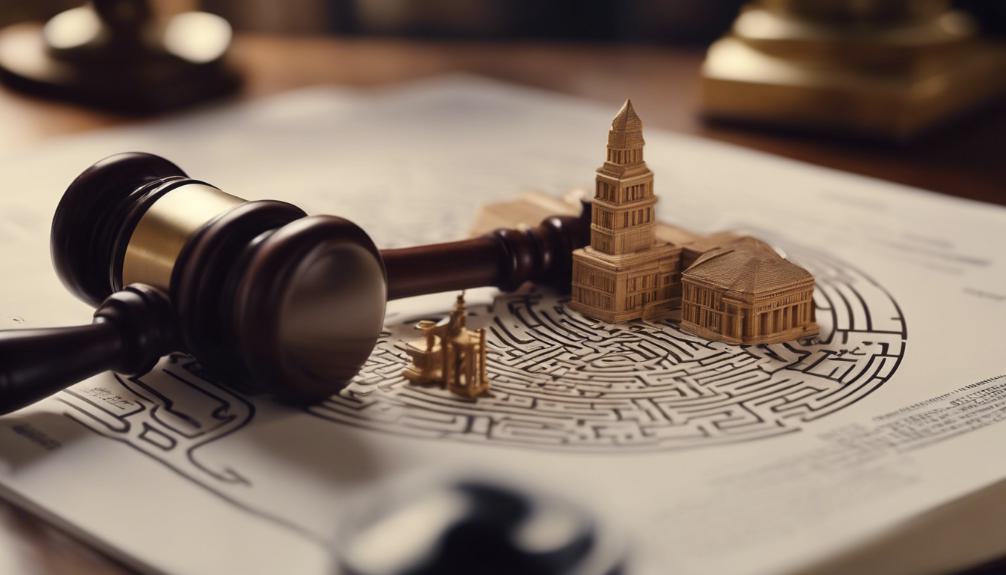
Handling the legal challenges of a train accident lawsuit requires a thorough understanding of the complex laws and regulations governing railway operations and safety standards. Success hinges on proving negligence by demonstrating a duty of care, its breach, and a direct causation leading to injury. This task demands meticulous documentation of the accident scene, injuries, and adherence to medical advice, laying a foundational bedrock for the case. Engaging an experienced attorney, versed in the nuances of train accident litigation, becomes imperative. They navigate through the intricacies of proving negligence, leveraging their specialization to strategize a compelling case. Their expertise in dissecting the multifaceted nature of railway operations and safety protocols assures that every legal avenue is explored, preparing for a robust representation in court.
Potential Damages Awarded
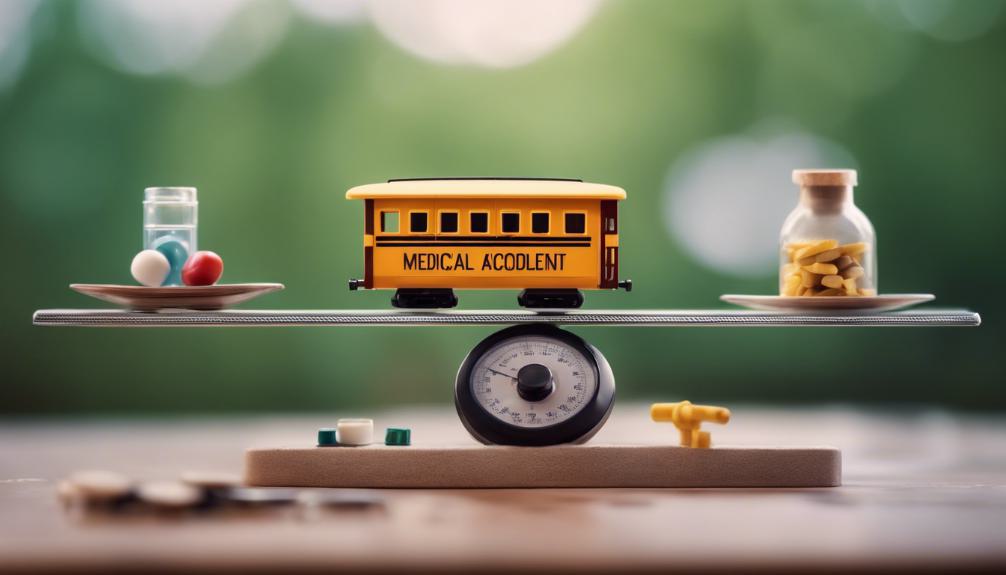
Understanding the legal intricacies and establishing negligence in train accident cases lays the groundwork for pursuing compensation through potential damages awarded. Victims may receive compensatory damages, which cover both economic and non-economic losses. Economic damages include medical expenses incurred from the injury, lost wages due to an inability to work, and future earnings lost as a result of the accident. Non-economic damages compensate for pain, suffering, and emotional distress experienced by the victim. Additionally, in cases where the defendant's conduct is found to be particularly essential, punitive damages may be awarded as a means of punishment and to deter similar future conduct. It's critical for victims to understand the scope of damages they may be entitled to recover, emphasizing the importance of meticulous legal representation in these cases.
Moving Forward After Settlement

Achieving a settlement in a train accident lawsuit marks the beginning of a new chapter for victims, focusing on recovery and adaptation to changes in their lives. This phase often involves managing the compensation received to facilitate physical and emotional healing. It is advisable for victims to work with financial advisors to make sure the settlement supports long-term recovery goals, including covering ongoing medical expenses and compensating for any loss of income. Additionally, seeking support from mental health professionals can be vital in addressing the psychological impact of the accident. The journey forward may also involve adjusting to new life circumstances, which can include adapting living spaces to accommodate physical limitations. Ultimately, the settlement provides a foundation for rebuilding, but the path to full recovery is personal and multifaceted.
Frequently Asked Questions
How Do I Determine the Statute of Limitations for Filing a Train Accident Lawsuit in My Jurisdiction?
To determine the statute of limitations for a train accident lawsuit in your jurisdiction, consult a qualified attorney experienced in personal injury law. They can provide guidance based on the specific laws of your region.
Can I Still Pursue a Lawsuit if I Was Partially at Fault for the Train Accident?
Yes, you can still pursue a lawsuit if partially at fault for a train accident. However, compensation may be reduced based on your degree of fault, according to comparative negligence laws applicable in many jurisdictions.
How Does the Legal Process Accommodate Claimants Who Suffer From Long-Term Disabilities as a Result of a Train Accident?
The legal process for claimants with long-term disabilities from train accidents involves proving negligence and linking it to the sustained injuries. Damages may cover medical treatments, lost earnings, and compensation for ongoing care needs.
Are There Any Specific Challenges in Suing a Government Entity for a Train Accident, and How Can They Be Addressed?
Suing a government entity for a train accident presents unique challenges due to sovereign immunity and strict notice requirements. Addressing these involves timely filing and adhering to specific procedural guidelines outlined by the jurisdiction.
How Does the Involvement of Multiple Victims in a Single Train Accident Affect the Legal Proceedings and Potential Settlement Amounts?
The involvement of multiple victims in a train accident can complicate legal proceedings, potentially leading to a longer litigation process and affecting the distribution of settlement amounts among the victims based on individual claims and damages incurred.
Conclusion
To sum up, successfully handling train accident lawsuits requires a thorough understanding of the accident's complexities, the legal principles involved, and the strategic steps necessary for pursuing justice. It is essential for victims to meticulously document the accident, seek immediate medical attention, and preserve vital evidence. Selecting an attorney with specialized expertise in train accidents is indispensable. Understanding the potential damages and legal challenges enhances the ability to secure a favorable outcome, facilitating a path towards recovery and restitution post-settlement.

This post has been generated by AI and was not reviewed by editors. This is Not legal advice. Please consult with an attorney.




